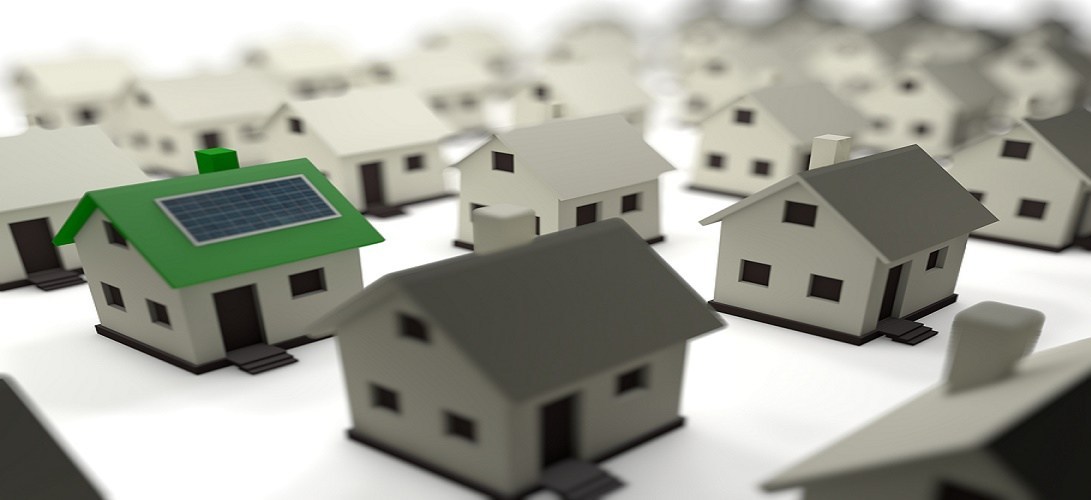Know Everything About Energy Efficient Homes of 21st Century
Share Know Everything About Energy Efficient Homes of 21st Century
Did you know that buildings are responsible for a huge share of energy, electricity, water and materials consumption globally?
Technology is getting smarter each day. Then why should your home be left behind? After all, everybody loves to live in a smart and luxurious dwelling. Energy is a precious resource which must be used judiciously. An energy efficient house sometimes referred to as a green living house, is a type of house that uses less energy than conventional houses because of its superior design and technologies used. It is a powerful way to help save energy, cut costs and reduce environmental impact. By investing in an energy efficient house, you are doing a big favour to the environment by doing your share in reducing the consumption of natural resources. Such buildings by design typically employ a good amount of insulation and energy efficient windows. These also minimize air leakage and require lower energy for heating and cooling the interiors. The energy efficiency of your home is based on its structure, heating and cooling systems and the like. This also has the advantage of lessened environmental impact due to the materials and techniques used in construction. Multiple strategies are used to reduce their overall energy consumption.
Before you invest in a new home, you should definitely consider its energy efficiency. Not only because you will save energy and money but also because your home will be much more comfortable and long-lasting. This is also a good time to find a renewable energy system that can provide electricity, water heating, as well as space heating and cooling. In addition to site conditions and climate, factors like insulation and air sealing, space heating and cooling also affect the energy consumption of a home.
Here we will present some tips which you can use to make your home a more energy efficient one.
Lighting
The lighting plan is a major aspect of any home and there is a lot you can do when it comes to lighting. There are various styles and types of lights available which, apart from aiding in home decor, can have a considerable impact on your home’s overall electricity consumption. Efficient appliances and LED lighting can lessen energy use. When you are buying a home, you must look into the fact that it has effective placement of windows (day-lighting) so that it receives a generous amount of natural light during the day, as it will help eliminate excess use of electric lights during that time. To minimize the total energy consumption, day-lighting techniques are the first daytime solution which should be considered by you. Solar panels, as well as renewable energy, can also be looked into. While selecting consumer products one should ensure that the appliances are meeting energy efficiency standards.
Materials Technology
Materials technology also contributes significantly to the energy savings. Dense and lightweight materials can be used to construct energy-efficient houses and we are required to reduce peak summer temperatures, maintain stable winter temperatures, and prevent possible overheating in spring or autumn. Also, factors like exterior wall colour which you choose will aid in reflection or absorption of heat depending on the predominant year-round outdoor temperature.
Plant Selection
One important part of ensuring energy efficiency is plant selection. The use of deciduous trees and self-attaching vines can assist in this. Proper placement of shade trees and plants is also a part of the energy-efficient design which also creates windbreaks where needed. This can provide up to 30% savings on heating costs in winters.
Rainwater Harvesting
Rainwater harvesting can be a useful and natural way to conserve rainwater and therefore reduce the need to use groundwater for your home needs.
Shape and Orientation
The shape and orientation of your home will affect the heating and cooling requirements. For example, if the building is shaped in such a way that reduces exposure to the sun and the walls are well insulated then the solar gain can be lessened, which will lead to decreased cooling requirements, saving energy.
Thermal Bridging
Everybody wants their dwelling to be well insulated from heat and cold. It is an important feature to reduce the loss of heat and cold from a building. A significant feature of energy efficient buildings is the increasing importance of heat loss through thermal bridging (also called a cold bridge or heat bridge) employed within the construction. This kind of bridging is frequently taken into account during building construction, especially in places like a door-to-wall junction, balcony-to-wall junction, roof-to-wall junction, areas with gaps and the like. So this needs to be reduced as much as possible.
Apart from the above, general tips like proper heating and cooling equipment maintenance; turning off the lights when not in use; reducing electricity use throughout your home; reducing hot water use; ensuring adequate insulation and the like go a long way in saving energy for your home.
Request a Call Back

